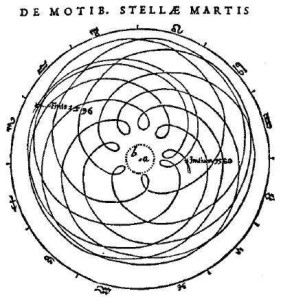Well-known and often dreaded, the “Mercury retrograde” period happens three times per year, each time for three weeks. When “Mercury is in retrograde” humans commonly miscalculate and miscommunicate, and unpredictable factors disrupt their routines. These small, annoying challenges are supposedly caused by the planet Mercury traveling backwards through the sky, which happens about 17 percent of the time.

No planet truly moves backwards, but from the earth all of them appear to do so at certain times, on a schedule. Astronomers, such as at NASA, and astrologers both use the same databases, available to all, to determine planetary retrogrades past and future. Retrogrades are normal and natural. That’s their way of reminding us that retrograde or “backwards” motion is also normal in our lives. To soften the effect of Mercury retrograde, simply slow down, relax a bit, take more care and be mindful, try to live in the moment, quit multi-tasking, or rethink your routine. This is Mercury retrograde’s lesson for us, and its gift.
To visualize a planet’s retrograde motion, imagine walking toward home when you realize you’ve dropped your bus pass. You retrace your steps, slowing down as you approach the place it was most likely dropped. You stop to pick it up and then turn homeward, soon resuming your normal walking speed.
Retrograde planets work the same way. A planet in retrograde backs up along the path it came, by degrees, sometimes backing into the previous zodiac sign. It slows and then “stations,” or appears motionless, for a while. When it resumes its forward motion we say the planet “goes direct.” Eventually the planet passes the point it started from and goes its merry way.
But if no planet ever truly moves backwards, how can it seem to? To make it very simple, our solar system’s planets orbit in concentric circles. Picture it as a racetrack. Sometimes Earth has the “inside track” and seems to move more swiftly than the other planets, as if we’re outracing and passing them. They appear to fall behind us, or move backwards. It’s an illusion, and temporary, because all planets travel as they should without changing pace. They never act “suddenly” or unpredictably.

Astrology says that a planet traveling in direct motion has a certain set of traits and effects, and when traveling in retrograde these same traits have different effects, as if the planet had put on a Halloween costume. On the surface these effects seem negative. When Venus, planet of love, art, diplomacy, and beauty, is in retrograde, it’s probably not the best time to cement a relationship or buy an entirely new wardrobe. But it’s a good time to “spa your mind” and assess your relationship, practice your musical instrument, or plan a versatile, affordable new wardrobe to buy when Venus goes direct. Friends or clients might seem petty or catty during Venus retrograde. Stay calm and hang on: Venus retrograde lasts only 40 days. Venus was retrograde in summer 2015 and will next be retrograde March 4 through April 15, 2017.
Advanced astrologers often mention the “shadow period” preceding and following a planet’s actual retrograde. They say it’s like a retrograde, and to take extra care at that time. For example, Mars will go retrograde from April 17 to June 23, 2016: about 11 weeks. But adding the shadow period extends this retrograde from February 17 to August 22—to a full six months. I’m not convinced the “shadow period” affects our personal lives as does visible retrograde motion, which is an illusion in the first place.

My view is that the most powerful days during a retrograde are when the retrograde begins—for Mars, that’s April 17—and ends, when the planet “stations” and turns and goes direct: June 23. Around those dates, try to hold off on truly major decisions. But if you must, go ahead, because astrology should not control your life. Guide you, yes. Control you, no.
